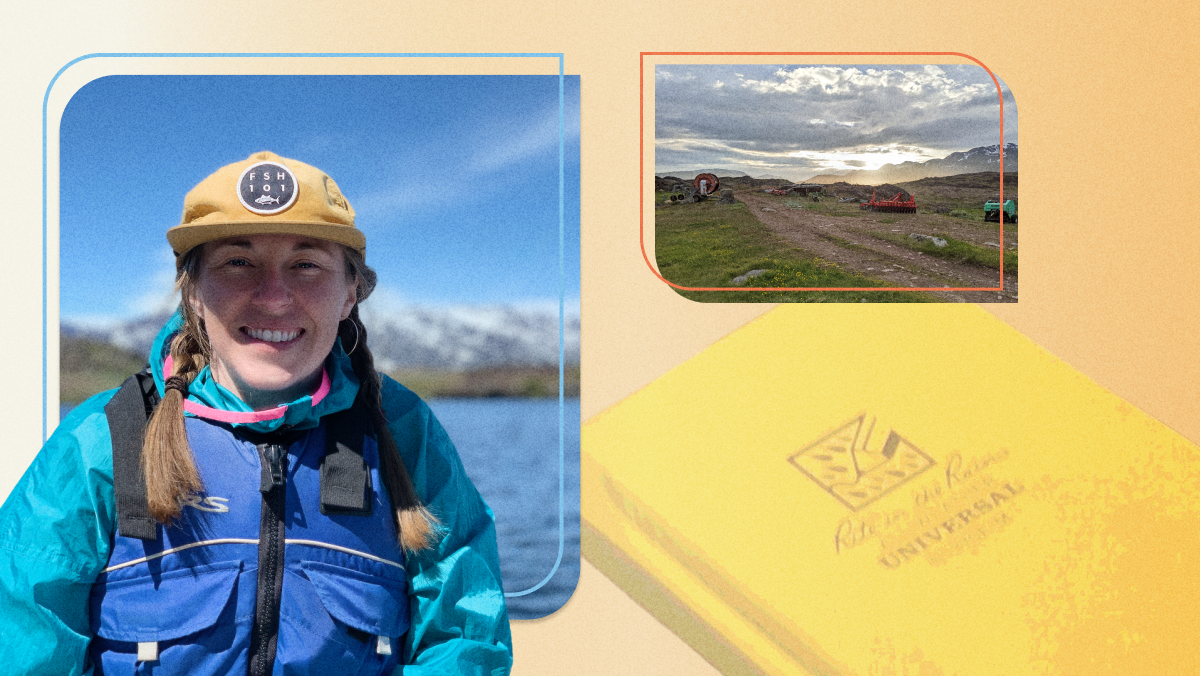
Amanda Gavin: Investigating Greenland’s rapidly changing water supply
For nearly a decade, Amanda Gavin has studied and conserved lakes, including many in Maine, that provide drinking water and support agriculture. Today, she’s investigating what the future may hold for tens of thousands of crystalline blue lakes within an Arctic country experiencing rapid ecological change: Greenland.
More frequent heat waves, drought, heavy rain and other extreme weather events are threatening Greenlandic communities’ access to clean water by impacting lake levels and reducing their quality through polluted runoff. That’s why Gavin, a University of Maine Ph.D. student in ecology and environmental sciences, is studying contemporary changes in lakes, particularly those in south Greenland, and how the lakes were impacted by past climate events. By studying the past and present, Gavin’s research can offer insight into the future of water quality and quantity in the region.
To support her work, the National Science Foundation awarded Gavin an Arctic Doctoral Dissertation Research Improvement Grant. Gavin also earned an American Dissertation Fellowship from the American Association of University Women, which recognizes doctoral candidates who serve women and girls in their communities, professions or fields of research.
“The lakes are a really big part of sheep farming. South Greenland is a lake rich landscape, and lakes are used for irrigation,” Gavin said. “These lakes in south Greenland, they are used for drinking water for humans and for sheep, so it’s important to know that the headwaters to drinking water sources are clean.”
When the ancient Norse arrived in south Greenland hundreds of years ago, they introduced sheep farming — the first recorded instance of the practice in the Arctic. Gavin said the Norse also changed the landscape by planting grass, plowing the land and building dams. In the 15th century, however, they disappeared and so did sheep farming.
Inuit reintroduced sheep farming in the 1700s, and it has since become a crucial part of south Greenland’s economy and provided food sovereignty to their communities.
“I went to south Greenland for the first time with a basic understanding of how the climate was changing and the types of freshwater resources. But my specific research questions were really something that came out of preliminary conversations with sheep farmers and learning about what they are concerned with,” Gavin said.
In those conversations, farmers told Gavin about their concerns with drought — the uncertainty it brings and how it can impact hayfield management — and changes in water quality and access.
Community engagement plays a key role in Gavin’s efforts to ascertain how Arctic freshwater lakes respond to environmental change across different periods of time.
She also harvests sediment cores from the bottom of lakes that provide a record of past conditions. In particular, she examines diatoms, a group of algae with cell walls made of silica that leave behind fossils in lake sediments. Because diatoms are extremely sensitive to environmental change, they provide insight into changes in lake level over the past 200 years. Additionally, Gavin has deployed and gathered data from sensors to determine how lake water levels are responding to periods without rain and the recovery time after an extreme event.
“Amanda’s research is advancing more holistic approaches to lake science by crossing time scales — from seasons to centuries — and by practicing early engagement with communities affected by environmental change. I am so pleased that her great work is being recognized by various prestigious funding sources,” said Jasmine Saros, associate director of UMaine’s Climate Change Institute and professor of lake ecology.
Gavin is among dozens of graduate students working in Greenland to help address socio-environmental challenges in the Arctic, the world’s most rapidly changing environment. Their work is made possible through a $3 million NSF Research Traineeship (NRT) grant awarded in 2020 to UMaine, an internationally-recognized leader in polar science, for an initiative called Systems Approaches to Understanding and Navigating the New Arctic (SAUNNA), led by Saros.
“Jasmine is an excellent scientist, and she really supports her students in a way that gives them what they need to become the best scientists that they can be,” Gavin said. “And so I feel like I’ve really grown as a scientist and had the support behind me to ask really interesting questions and have the tools I need to to do that research.”
SAUNNA is what encouraged Gavin, who earned a master’s degree from UMaine in 2018, to pursue her Ph.D. at the same place, as it would allow her to work with top-tier scientists from a variety of disciplines. Since joining the Ph.D. program, Gavin has taught undergraduate courses in lake ecology and facilitated a research forum course that examined the roles of environmental science, policy and Indigenous knowledge in the Arctic research.
“I really love teaching, and I love research, and I would like to continue being able to teach and do research, work in the Arctic and work in lakes in general,” Gavin said.“My experience at UMaine as a Ph.D. student has been wonderful.”
Contact: Marcus Wolf, 207.581.3721; marcus.wolf@maine.edu
